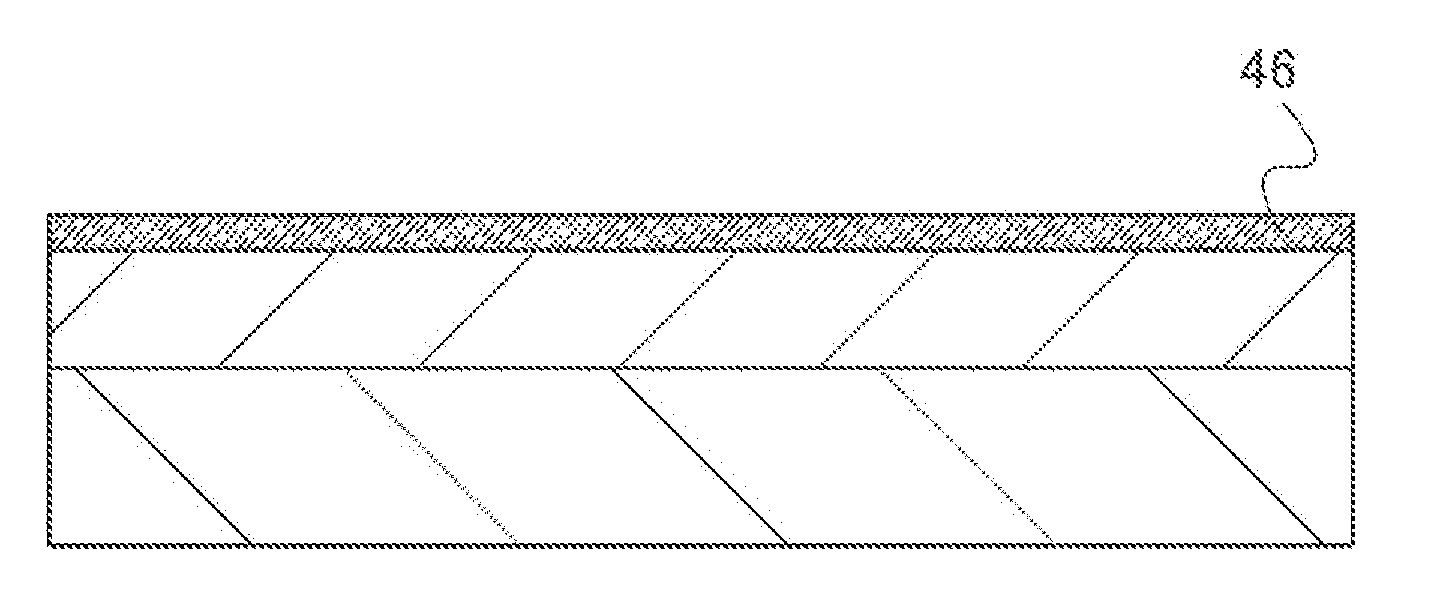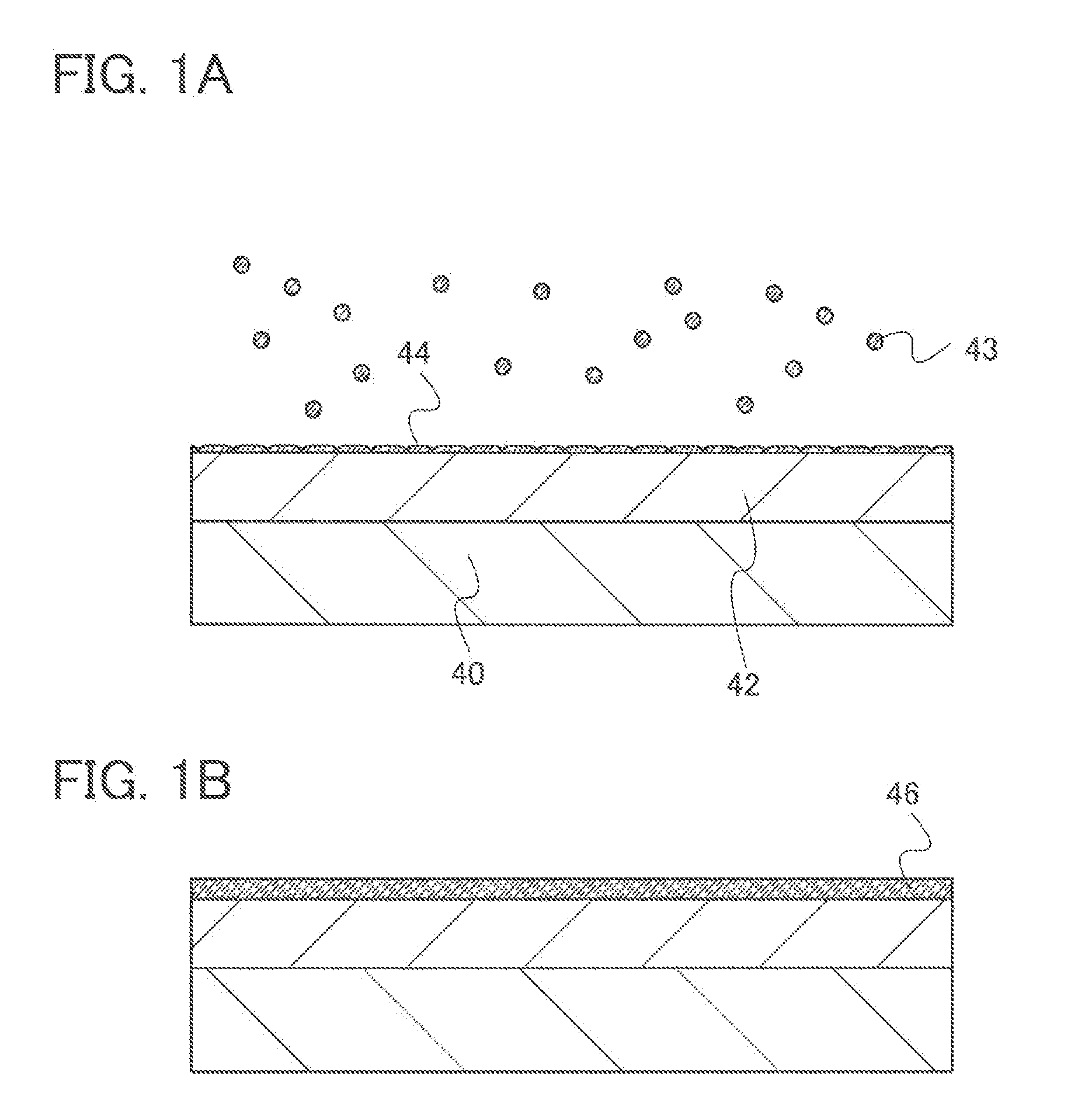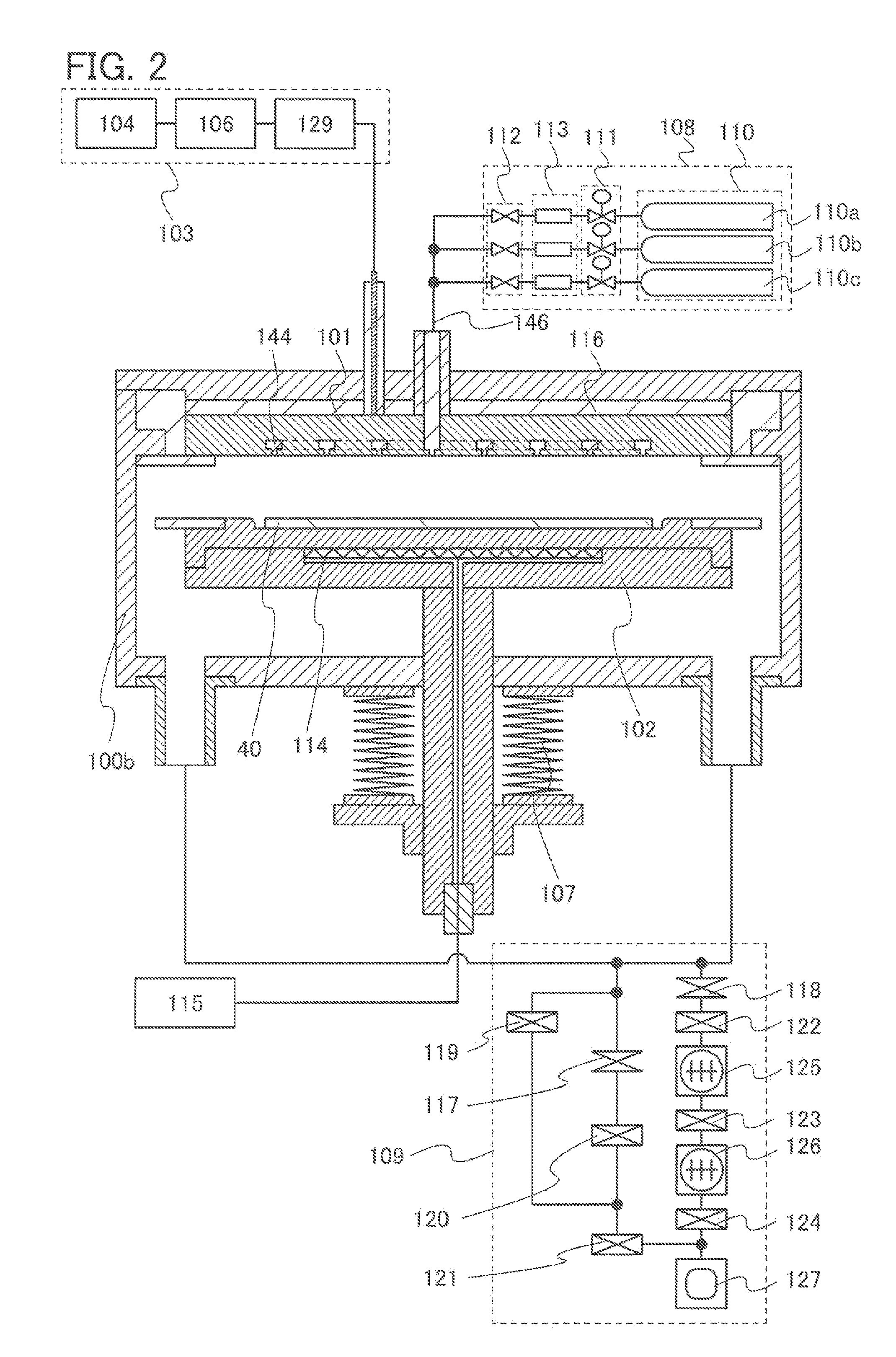Method of manufacturing photoelectric conversion device
a technology of photoelectric conversion and manufacturing method, which is applied in the direction of sustainable manufacturing/processing, final product manufacturing, coatings, etc., can solve the problems of inability to manufacture dense microcrystalline semiconductor films and inability to form dense semiconductor films, and achieve the effect of reducing the proportion of amorphous components in deposited microcrystalline semiconductor films
- Summary
- Abstract
- Description
- Claims
- Application Information
AI Technical Summary
Benefits of technology
Problems solved by technology
Method used
Image
Examples
embodiment 1
[0044]In this embodiment, a method for manufacturing a microcrystalline semiconductor film having high crystallinity is described with reference to FIGS. 1A and 1B, FIG. 2, FIGS. 3A and 3B, and FIG. 4.
[0045]As illustrated in FIG. 1A, in a method for manufacturing a microcrystalline semiconductor film shown in this embodiment, deposition precursors 43 are formed in a gas phase, the deposition precursors 43 are deposited over a base film 42 which is formed over a substrate 40, and crystal nuclei 44 are formed. Next, as illustrated in FIG. 1B, a microcrystalline semiconductor film is formed over the crystal nuclei 44, whereby crystals are grown using the crystal nuclei 44 as nuclei so that a microcrystalline semiconductor film 46 can be formed.
[0046]The deposition precursor 43 is formed through reaction of electrons and a source gas in plasma. The pressure in a film formation chamber can be higher than a film formation pressure of 300 Pa for a conventional microcrystalline semiconducto...
embodiment 2
[0081]In this embodiment, a structure applicable to the first electrode of the plasma CVD apparatus shown in Embodiment 1 is described with reference to FIG. 5, FIGS. 6A and 6B, FIGS. 7A and 7B, FIGS. 8A and 8B, FIGS. 9A and 9B, and FIGS. 10A to 10D.
[0082]In a structure of the reaction chamber of the plasma CVD apparatus illustrated in FIG. 5, the first electrode 101 is an electrode that is projected and depressed by having projected portions 141 and depressed portions 143 arranged regularly, preferably at regular intervals. In other words, the projected portions 141 formed using projected structure bodies are arranged regularly, preferably at regular intervals. The hollow portions 144 connected to the gas supply unit 108 are provided in the depressed portions 143 of the first electrode 101. In other words, the depressed portions 143 form a common plane where gas supply ports are provided. Here, the region having the gas supply port near a surface of the second electrode 102 is rega...
embodiment 3
[0099]In this embodiment, a structure applicable to the first electrode of the plasma CVD apparatus shown in Embodiment 1 is described with reference to FIGS. 9A and 9B. FIG. 9A is a plan view of the first electrode 101 seen from the second electrode 102 side. FIG. 9B is a cross-sectional view taken along A-B in FIG. 9A. Note that in FIG. 9A, regions which are depressed (that is, depressed portions) are shown in fine hatching for clear illustration of the state of the projection and depression.
[0100]As illustrated in FIGS. 9A and 9B, gas supply ports of hollow portions 142 formed in the projected portions 141 are provided regularly, preferably at regular intervals. Further, as illustrated in FIG. 9B, the gas supply ports of the hollow portions 142 are provided in the projected portions 141. The plurality of projected portions 141 are separated from one another, and the depressed portions 143 form a continuous plane (common plane). Here, the projected portions 141 each have the shape...
PUM
| Property | Measurement | Unit |
|---|---|---|
| pressure | aaaaa | aaaaa |
| distance | aaaaa | aaaaa |
| frequency | aaaaa | aaaaa |
Abstract
Description
Claims
Application Information
 Login to View More
Login to View More - R&D
- Intellectual Property
- Life Sciences
- Materials
- Tech Scout
- Unparalleled Data Quality
- Higher Quality Content
- 60% Fewer Hallucinations
Browse by: Latest US Patents, China's latest patents, Technical Efficacy Thesaurus, Application Domain, Technology Topic, Popular Technical Reports.
© 2025 PatSnap. All rights reserved.Legal|Privacy policy|Modern Slavery Act Transparency Statement|Sitemap|About US| Contact US: help@patsnap.com



